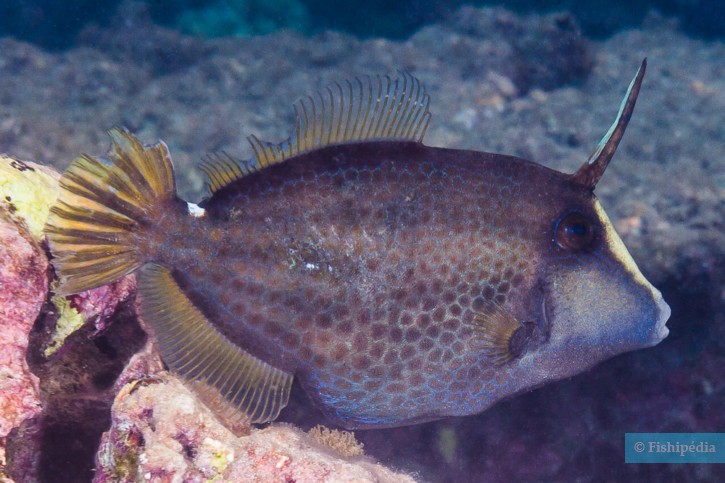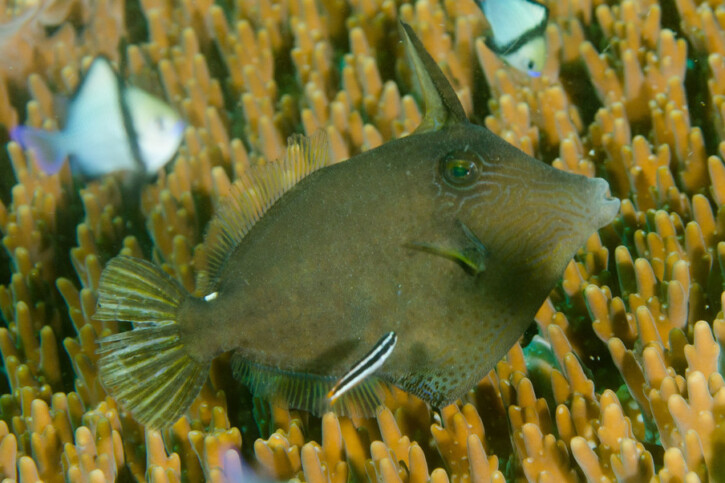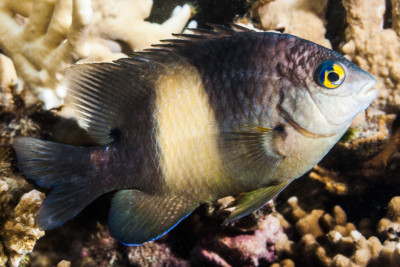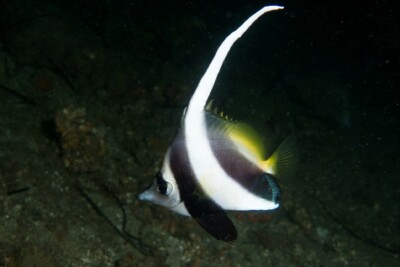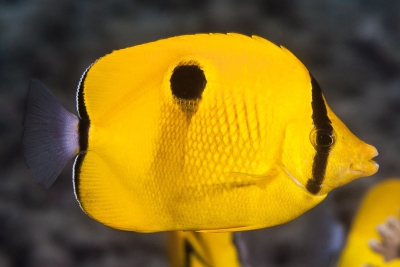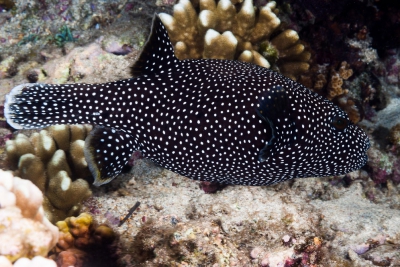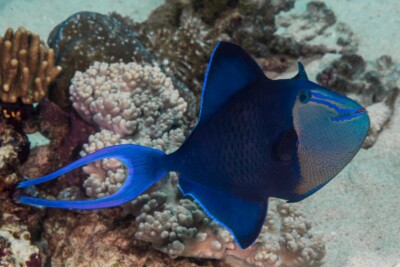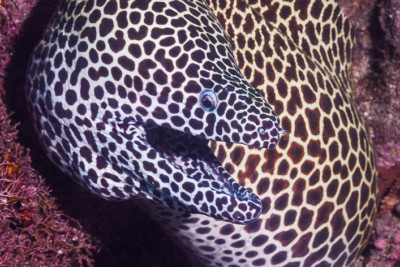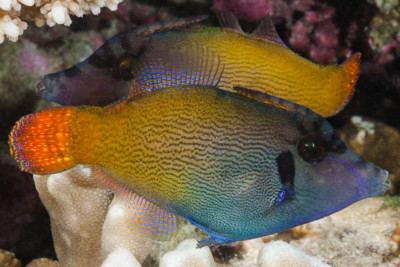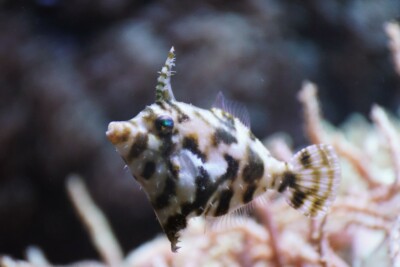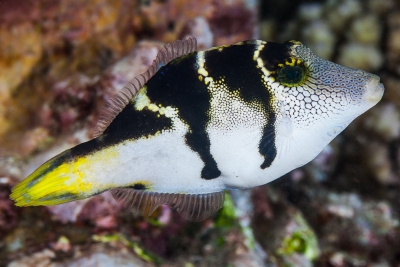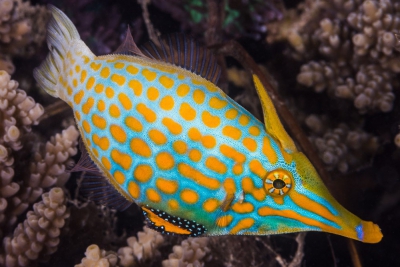honeycomb filefish
| Scientific name | Cantherhines pardalis |
|---|---|
| Descriptor | Rüppell |
| Year of description | 1837 |
| IUCN category (World) | LC |
| Family | Monacanthidae |
| Genus | Cantherhines |
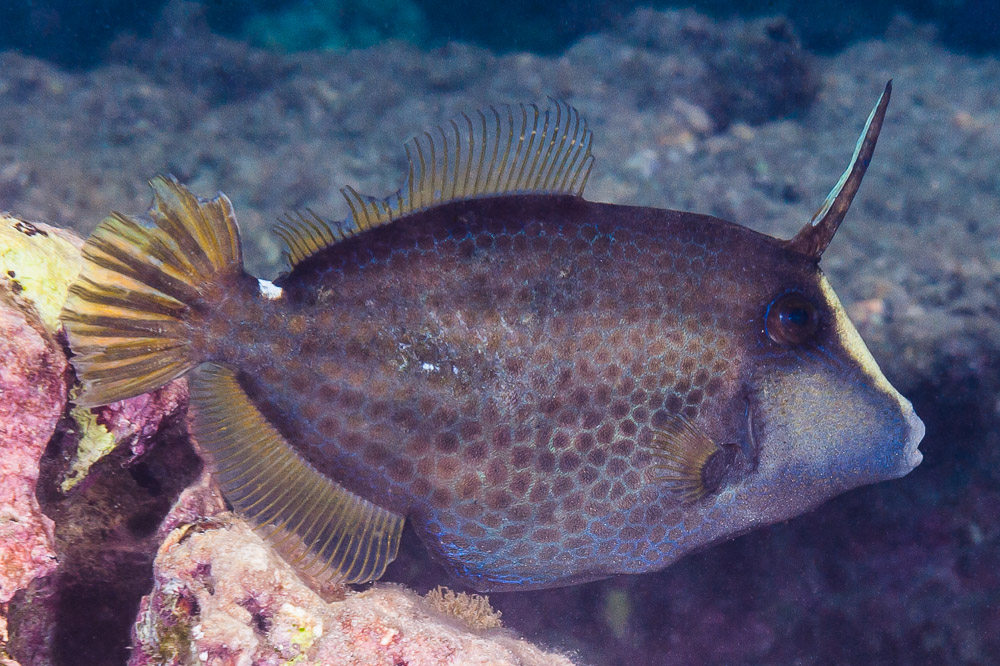

Introduction
The Pervagor janthinosoma, commonly known as the honeycomb filefish, is a tropical fish with a global distribution in tropical seas and oceans.
This species is among the list of species that tend to acclimatize to the southern Mediterranean Sea.
Who is it?
Morphology
-
Average size15 cm
-
Maximum size25 cm
-
ShapeOvoid
-
Patternmottling
-
Average size15 cm
-
Maximum size25 cm
-
ShapeOvoid
-
Patternmottling
How to recognize This fish ?
The honeycomb filefish has a predominantly brown body with darker spots or marbling resembling a honeycomb pattern. The fins are translucent, slightly brownish-yellow.
Irregular stripes, mostly horizontal, run across the head. Some individuals have a lighter bar on the head extending from the base of the first ray of the dorsal fin to the mouth.
Sexual dimorphism
There is no apparent dimorphism in this species.
Behaviour & Life cycle
-
dietcarnivorous
-
Sociabilitysolitary
-
territorialNo
-
Way of livingdiurnal
The honeycomb filefish is a fish that resides in shallow lagoons. It is a solitary species.
Generally, it is an independent fish that pays little attention to other species. However, it may show some signs of aggression towards its conspecifics.
This species is microphagous and spends most of its time searching for small organisms among rocks and corals.
Reproduction
-
Reproductiondont le mode de reproduction est encore inconnu
The honeycomb filefish is a fish whose reproductive mode is still poorly understood.
Harmless species
This species does not represent any particular threats to humans when encountered in its natural environment.
Origin and distribution

What is its habitat?
Natural environment characteristics
-
Depth0 - 20 m
-
FlowMedium and Slow
Biotope presentation
The honeycomb filefish is most commonly found at depths of less than 20m. However, it is not impossible to find this fish at other depths.
This species moves among the corals in lagoons in search of microfauna.
Species of the same biotope
To go further
Sources & Contributions
Participation & Validation
The Fishipedia team and specialist contributors are committed to providing high-quality content. However, although the information comes from scientific sources or testimonials from specialists, the cards may contain inaccuracies.

Adrien Falzon

Benoit Chartrer
Translation
Translation done with the valuable contribution of our translators, who make this information available to a wider audience. We sincerely thank them for their commitment.
Scientific partners
Tags
Species of the same family
Species of the same biotope
